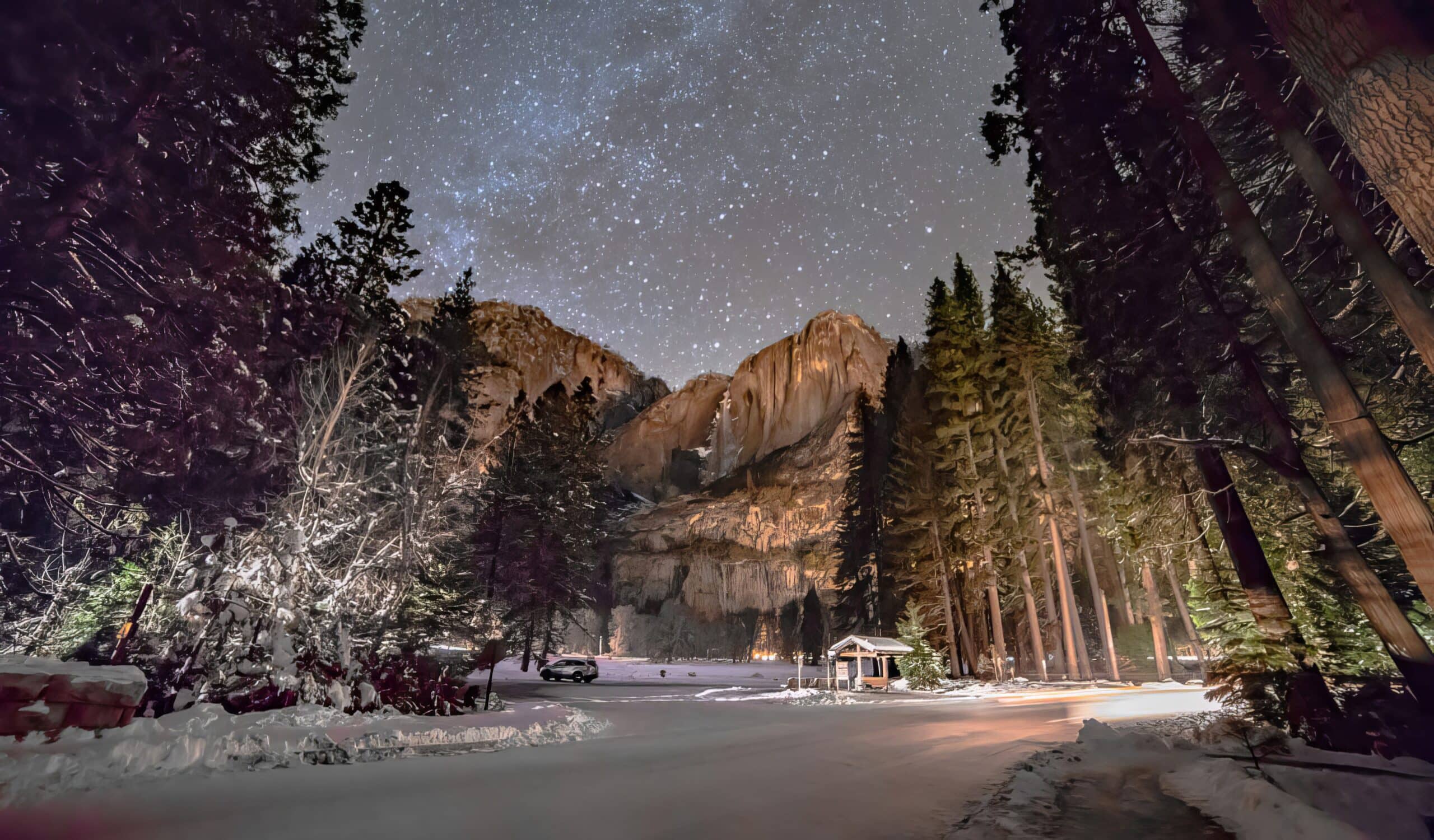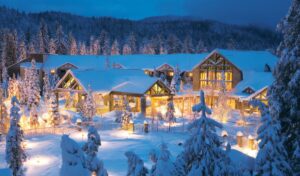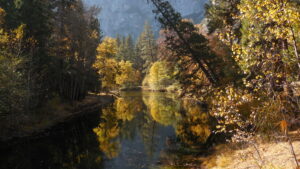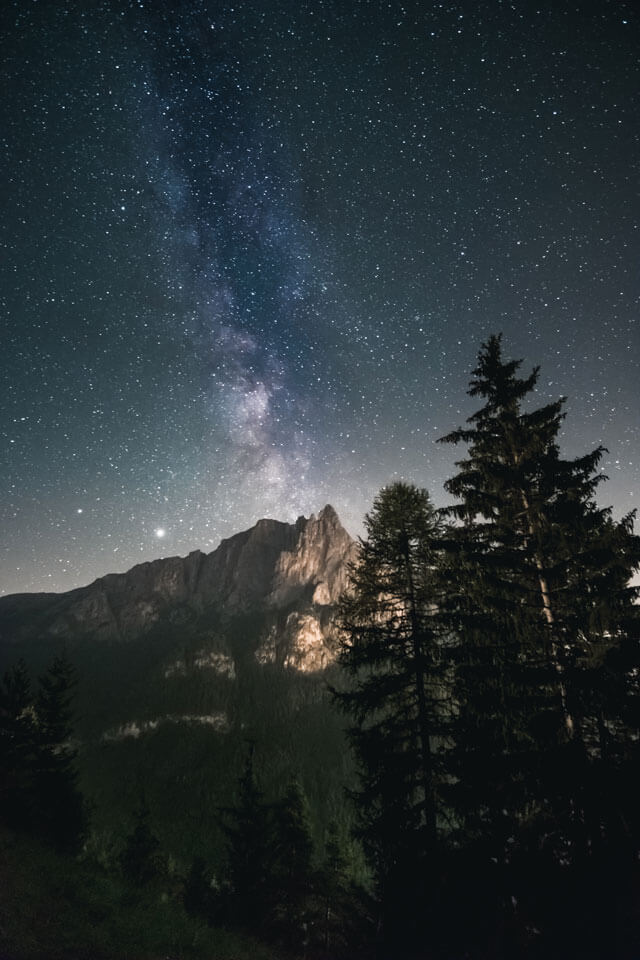
With its crisp mountain air and bounty of recreational riches, Yosemite Mariposa boasts one particular activity that literally outshines the rest: winter stargazing. Mariposa County is home to just over 17,000 people, huge open spaces, ranches instead of apartment buildings and no stop lights. What does all of that mean? No light pollution and some of the best dark sky experiences that California has to offer.
Yosemite National Park is one of the best places to stargaze in California since it has some of the darkest skies, making even the Andromeda Galaxy visible to the naked eye under the right circumstances. For locals, it means that a night sky dotted with bright stars is a common occurrence, but from visitors from Southern California cities, the nightly light show is an unexpected but welcome experience. For kids and adults alike, the ability to watch the stars of the Northern Hemisphere is an experience filled with wonder. Some aren’t aware of how many stars an unpolluted night sky has, let alone how beautiful they all are. Just a quick glance and the sky can make it clear why the ancient Greeks, Egyptians and Romans made such extravagant tails about the constellations in the clear night sky.
Every night is an amazing one under a Mariposa night sky, but there are some celestial events that simply shouldn’t be missed during the year’s crisp and clearest nights.
Note: want to turn a night under the stars into an educational experience? Come prepared with a star chart app to let you know If that bright light is a star, planet, moon or even a satellite while you Yosemite stargaze.
Some of the Best Stargazing in California: Star-Studded Lineup
The dazzling lineup of winter celestial events in Yosemite Mariposa simply pops against a slate black backdrop that can only be found in the Sierra mountain wilderness. From all the -ids (aka meteor showers) to the aptly-named full moons, you can watch the curtain rise and set on a new show every night.
Winter Meteor Showers
What we commonly refer to as shooting stars, meteoroids are actually fragments of asteroids and cosmic dust that burn up as they approach Earth. When large numbers of meteoroids light up the sky to form a meteor shower, be certain that the _ids are in play!
If you are stargazing in winter you can catch the Geminids. Typically the strongest shower of the year, the Geminids are marked by bright and intensely colored meteoroids with a maximum rate of 120 per hour under perfect conditions (think: Yosemite Mariposa!). In comparison, the ever-popular Perseids of summer shoot at a max rate of 100 per hour. The Geminids occur November 19 – December 16, with peak viewing December 13-14. Bundle up and catch the headliner this stargazing season!
Often overlooked because they occur around Christmas, the Ursids are a quickie in the meteor shower pantheon. They blaze at a rate of 5-10 per hour, with an occasional burst of 25 per hour. What better holiday gift to be shared by all? This year the show runs December 17 – December 26, with the best viewing on the peak date December 22-23.
Yosemite Mariposa winter stargazers ring in the New Year with the Quadrantids. Featuring bright fireballs and short trains, these meteors max at 80 per hour but have a shorter peak window (6 hours vs. two days) making them a cameo appearance not to miss. With your feet pointing northeast, lay back, pull your blanket up tight and hum Auld Lang Syne to usher in the promise of brighter days ahead!
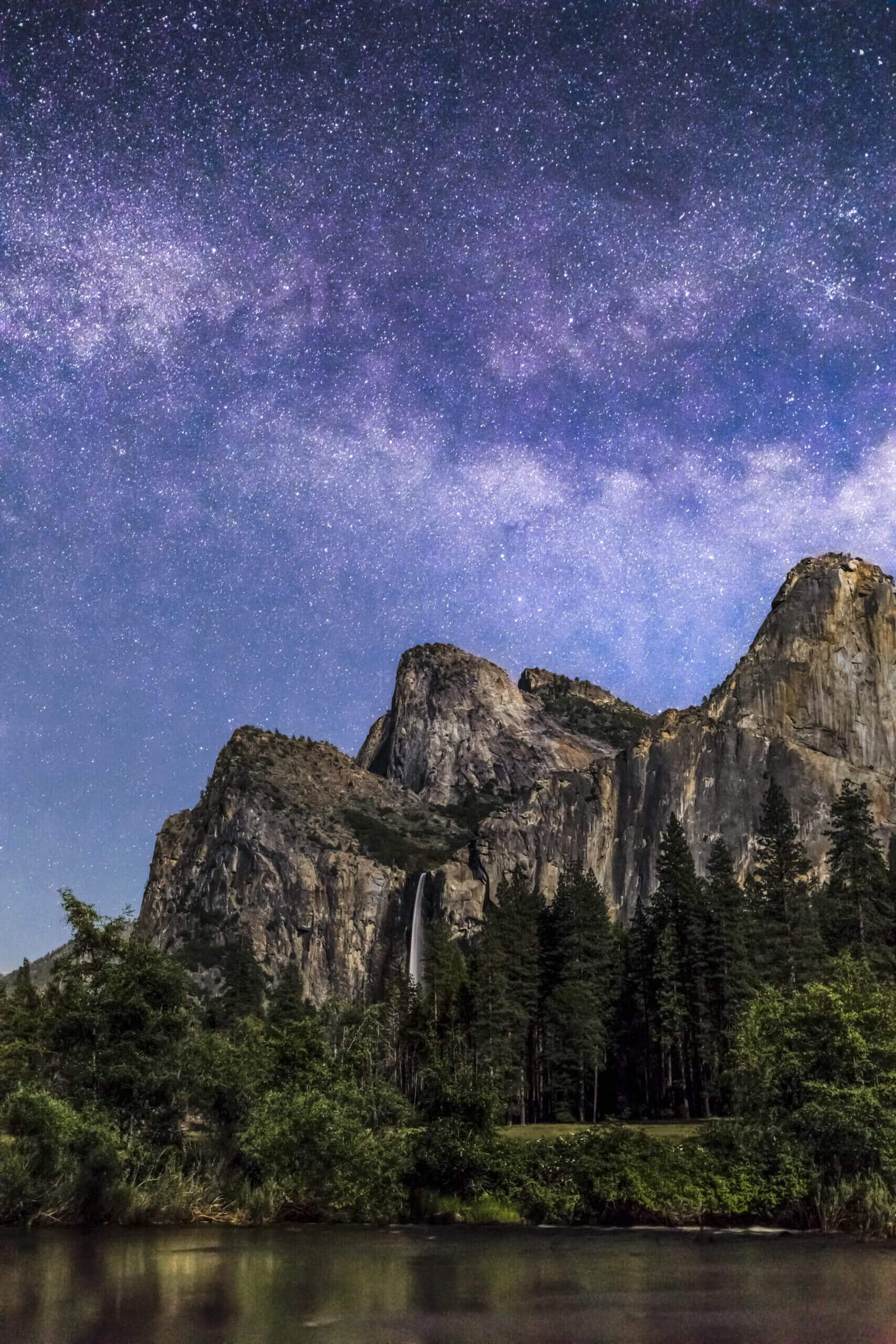
Constellations
With its crisp, dark winter skies, Yosemite Mariposa County is nature’s planetarium. Featuring way more than just the Big Dipper, there are 88 constellations (groups of stars that form a distinct shape) in our northern and southern skies, representing ancient gods, goddesses, animals and mythological beasts. Names such as Orion, Draco and Ursa Major all have their own histories & meanings, so try downloading a killer astronomy app or make a homemade star wheel to identify this stellar cast.
The Best Time to Stargaze to See Winter Full Moons
Whether illuminating snow-kissed tree branches along the Merced River or glowing off the granite of El Capitan, whether making your Airstream trailer look extra extra-terrestrial or lighting up the steam rising from your hot chocolate, the full moons of Yosemite Mariposa winter are something to behold.
The Winter full moon club kicks off with the Cold Moon on December 15 and is named for the month when the nights become long and the temperatures drop. Next up, the Wolf Moon on January 28, is named for the wolves often heard howling during the nights of yore. The native Southern Miwok word for moon is kome, and when full its luminescence enabled nighttime travel, fishing and hunting. Both practical and beautiful. The last full moon of winter is the Snow Moon on Saturday, February 24, a month historically marked by heavy snowfall.
Adventures Under the Stars
From hiking the Yosemite Valley to Yosemite Falls beneath the light of the silvery full moon to strapping on your snowshoes for a star-studded walkabout, Yosemite Mariposa offers lots of options for winter exploration. Glacier Point stargazing is popular, given its wide-open views of the heavens. No matter what you deem to be the best place to stargaze in Yosemite, you can’t go wrong with a night sky like this.
Night Hikes
Mariposa County, with its crisp and clear mountain air, is full of can’t miss hikes. Add to that the reduced winter crowds and the fact that you’re out under the stars and, well, it’s a recipe for serenity! Try the flat Cook’s Meadow Trail in Yosemite Valley for an amphitheater of moody bliss or get off the beaten path on any of the lower elevation fire roads in the Sierra National Forest or Stanislaus National Forest. Fun fact: Yosemite Valley sits at just 4,000 feet elevation, meaning that you’ll get some light snow but it’s hike-able year-round!
Snowshoeing/Cross-Country Skiing During Stargazing Season
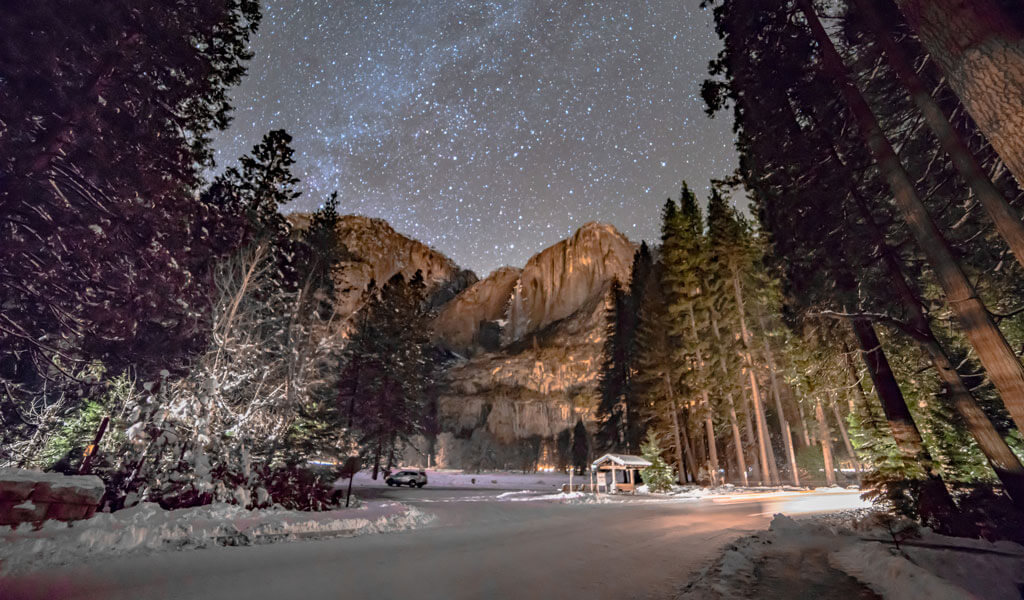
The higher elevations get more snow than the Valley, which means ample opportunity to strap on your snowshoes or step into your bindings and explore Yosemite Mariposa with a whole new perspective. A killer view in winter is Dewey Point, where clouds can be seen rolling through the Valley below. Standing on the canyon rim it feels like you can reach out and touch the ice-crusted face of El Capitan. A mug to remember!
The Best Time to Stargaze for Astrophotography
In Yosemite Mariposa, a shot in the dark takes on new meaning. With so many unique rock formations, wild rivers and pristine meadows, the opportunity for world-class stargazing photography abounds, especially in the icy glow of winter. Whether you’re setting up a tripod for long exposures or snapping away with your pixel-packed smartphone, all you need is a warm coat and an eye for the beauty that surrounds.
Holiday Hurrah
Whether it’s Kwanzaa, Christmas or Hanukkah, New Year’s, Mardi Gras or the Solstice, winter holidays provide the perfect frame for stargazing Yosemite in winter. Bring the family and experience a variety of lodging options from the world-class Tenaya Lodge at Yosemite to AutoCamp Yosemite, a 35-acre armada of well-appointed Airstream trailers with a clubhouse where guests can experience some of the best stargazing in California from the scenic roof deck. Heck, even come for the Super Bowl and wish upon a star that your team wins! Regardless of the holiday, Yosemite Mariposa satisfies the curiosity of astronomers from novice to virtuoso and has everything winter stargazers need to achieve the coolest view.

